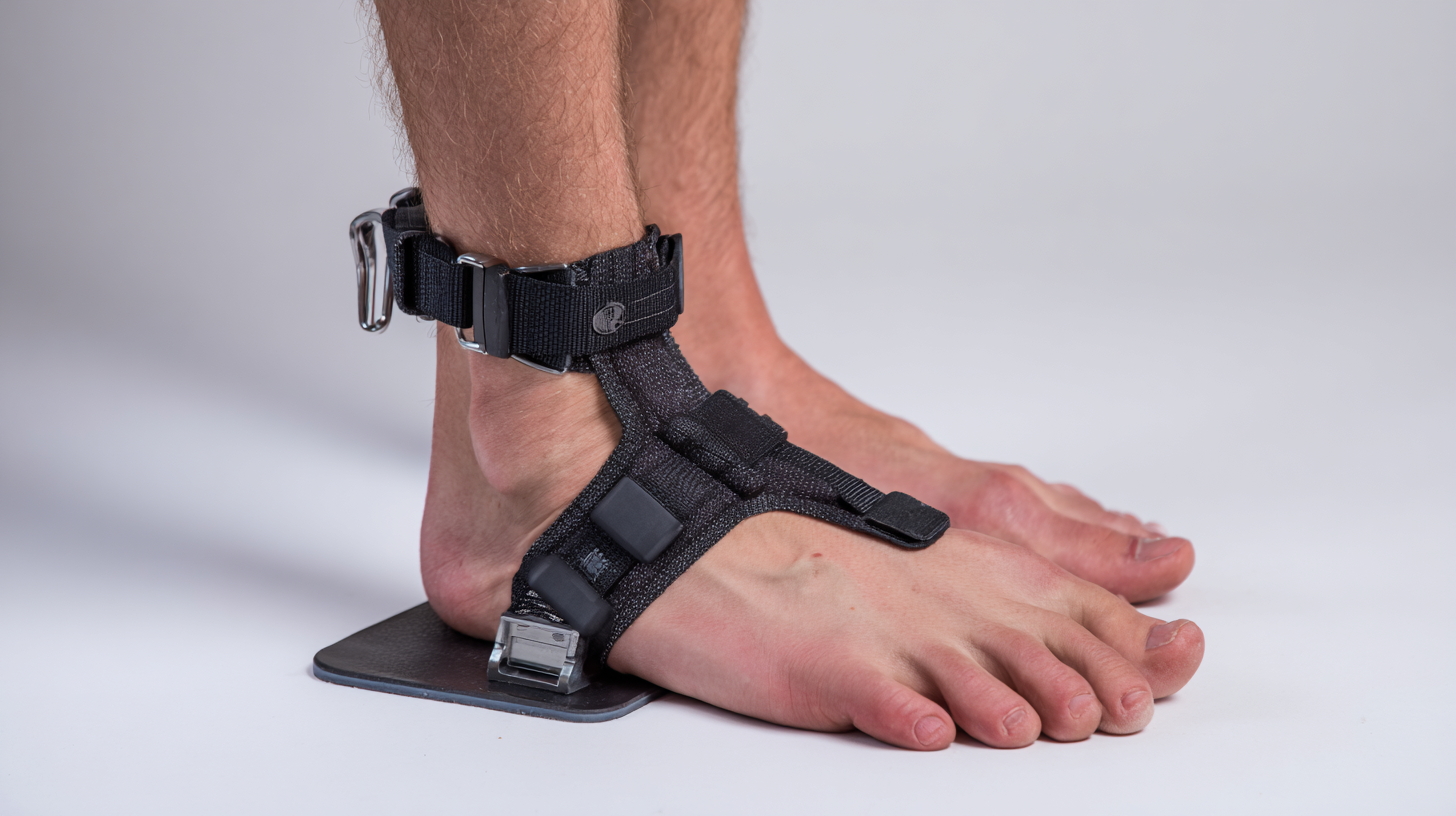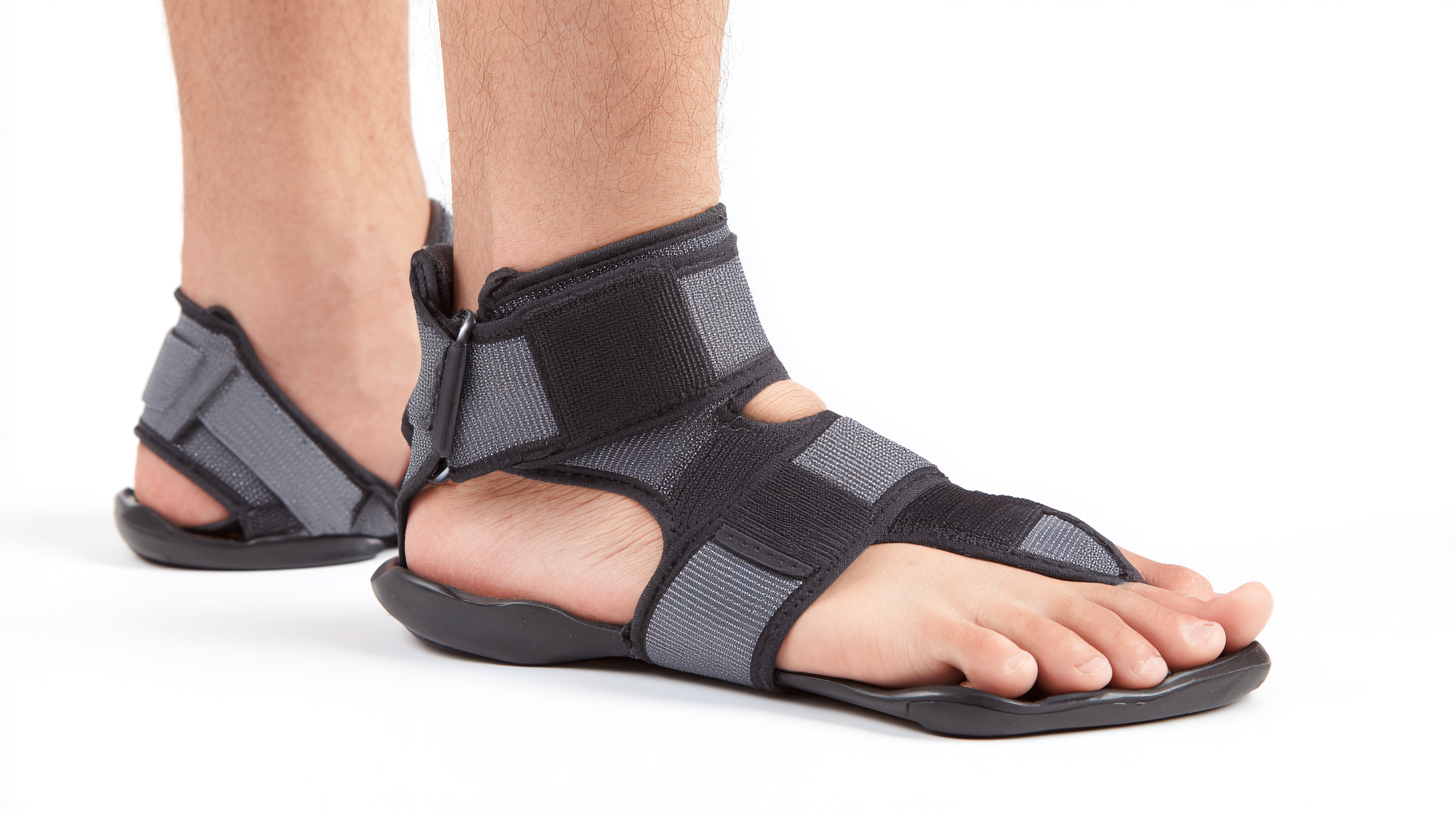How Foot Braces Can Enhance Mobility and Alleviate Pain: Expert Insights and Tips
 Foot braces have emerged as a crucial tool in enhancing mobility and alleviating pain for individuals with various foot and ankle conditions. These aids provide not only structural support but also contribute to improved alignment, stability, and overall function of the lower extremities. As we delve into expert insights and practical tips, it becomes apparent that foot braces can significantly impact one's daily life, promoting greater independence and mobility. Whether you are dealing with chronic pain, recovering from an injury, or seeking preventive measures, understanding how to choose and utilize foot braces effectively can make a profound difference. In this exploration, we will uncover the different types of foot braces available, their specific benefits, and strategies to optimize their use, empowering you to take control of your foot health and enhance your quality of life.
Foot braces have emerged as a crucial tool in enhancing mobility and alleviating pain for individuals with various foot and ankle conditions. These aids provide not only structural support but also contribute to improved alignment, stability, and overall function of the lower extremities. As we delve into expert insights and practical tips, it becomes apparent that foot braces can significantly impact one's daily life, promoting greater independence and mobility. Whether you are dealing with chronic pain, recovering from an injury, or seeking preventive measures, understanding how to choose and utilize foot braces effectively can make a profound difference. In this exploration, we will uncover the different types of foot braces available, their specific benefits, and strategies to optimize their use, empowering you to take control of your foot health and enhance your quality of life.
Understanding Foot Braces: Types and Their Benefits for Mobility
Foot braces are essential devices designed to enhance mobility and provide support for individuals experiencing foot or ankle issues. There are various types of foot braces, each tailored to address specific conditions such as foot drop, instability, sprains, or post-surgical recovery. For instance, ankle-foot orthoses (AFOs) are particularly effective in improving gait for those recovering from strokes or living with multiple sclerosis. By stabilizing the foot and controlling movement, AFOs enable users to walk more confidently and reduce the risk of falls.
In addition to AFOs, specialized braces such as ankle braces can prevent twists and strains, offering protection during physical activities. They work by limiting unwanted movements, thereby reducing the likelihood of injury. The benefits of these devices extend beyond mere physical support; they also contribute to emotional well-being by fostering independence and allowing individuals to engage more fully in daily activities. Understanding the different types of foot braces and their specific advantages can empower users to make informed choices that enhance both mobility and overall quality of life.

How Foot Braces Relieve Pain: Mechanisms and Insights from Experts
Foot braces serve as a vital tool in managing pain and enhancing mobility for individuals suffering from various foot and ankle disorders. The mechanisms behind their pain-relieving properties are multifaceted. By providing structural support, these braces help stabilize the foot and reduce undue pressure on affected areas. This stabilization can alleviate discomfort caused by conditions like plantar fasciitis, arthritis, or post-surgical recovery, as it maintains proper alignment and minimizes strain during movement.
Experts emphasize the importance of customization in the effectiveness of foot braces. A properly fitted brace can significantly influence pain management and mobility improvement. Orthotic specialists suggest that individuals seek assessments to ensure their braces address specific needs, such as arch support or heel cushioning. Additionally, some modern foot braces incorporate advanced materials and designs that allow for breathability and dynamic support, enhancing comfort throughout daily activities. Ultimately, the right foot brace not only alleviates pain but also empowers users to maintain an active lifestyle.
Impact of Foot Braces on Pain Relief and Mobility
This chart illustrates the effectiveness of foot braces based on user feedback, showing an average pain relief score of 7.5 out of 10 and a mobility improvement percentage of 65%. These insights highlight how foot braces can significantly enhance mobility and alleviate pain for users.
Choosing the Right Foot Brace: Tips for Individual Needs and Conditions
When choosing the right foot brace, it’s essential to consider your specific needs and the conditions you are managing. Different types of foot braces are designed to address various issues, such as flat feet, plantar fasciitis, or post-injury recovery. For instance, those suffering from plantar fasciitis may benefit from a brace that offers arch support and cushioned heel relief, while individuals with flat feet might require a brace that provides structural support and alignment correction. Consulting with a healthcare professional can provide valuable insights into which type of brace will best suit your condition.
Another key factor in selecting a foot brace is the fit and comfort. A well-fitted brace should allow for natural movement while offering the necessary support. Look for adjustable straps and breathable materials to enhance comfort, especially for prolonged wear. It's also important to consider your lifestyle and daily activities; for example, an athlete may need a different type of brace than someone who spends most of their day on their feet at work. By taking into account both your specific foot conditions and your daily needs, you can find a foot brace that not only alleviates pain but also enhances your overall mobility.

Tips for Properly Fitting and Wearing Foot Braces for Maximum Effectiveness
Foot braces can significantly enhance mobility and alleviate pain for those dealing with various foot conditions. However, to maximize their effectiveness, it is crucial to ensure a proper fit and wear them correctly. Achieving the right fit not only improves comfort but also helps in providing adequate support where it’s needed.
When fitting a foot brace, it's essential to start by measuring your foot size accurately. Measure both feet, as they may differ in size, and choose a brace that accommodates the larger foot. Make sure to wear the type of socks you plan to use with the brace during fitting. Adjust the straps of the brace snugly, ensuring that it offers support without restricting blood flow.
In addition to proper fitting, wearing the brace consistently is key to experiencing its benefits. Gradually increase wear time to allow your foot to adapt, starting with a few hours a day. Also, consider pairing the use of your foot brace with recommended exercises or stretches to strengthen the muscles and tendons in your foot, which can further enhance mobility and alleviate any discomfort.
Maintaining and Caring for Foot Braces: Ensuring Longevity and Performance
Maintaining and caring for foot braces is crucial for enhancing mobility and alleviating pain, particularly for older adults whose feet may be more prone to wear and tear. Regular cleaning and proper storage can significantly extend the life of foot braces. Ensure to wipe them down after each use with a damp cloth to remove sweat and dirt, which helps to prevent mold and bacteria buildup. Additionally, store them in a cool, dry place to maintain their shape and functionality.
When wearing foot braces, it's essential to regularly check for any signs of wear, such as fraying straps or worn-out cushioning. Addressing these issues early can prevent further discomfort and ensure optimal performance. Always follow the manufacturer's recommendations for adjustments and fit, which can enhance comfort and support.
Consider incorporating daily foot care routines, such as gentle stretching and massage, to complement the benefits of foot braces. These practices can help maintain flexibility and circulation, addressing many everyday foot issues that can arise with age. Regular attention to both braces and foot health promotes longevity and effective use, empowering individuals to stay active and pain-free.

Home
About Us
Products
Videos
Download
News
FAQ
Blog
Contact Us
 Foot braces have emerged as a crucial tool in enhancing mobility and alleviating pain for individuals with various foot and ankle conditions. These aids provide not only structural support but also contribute to improved alignment, stability, and overall function of the lower extremities. As we delve into expert insights and practical tips, it becomes apparent that foot braces can significantly impact one's daily life, promoting greater independence and mobility. Whether you are dealing with chronic pain, recovering from an injury, or seeking preventive measures, understanding how to choose and utilize foot braces effectively can make a profound difference. In this exploration, we will uncover the different types of foot braces available, their specific benefits, and strategies to optimize their use, empowering you to take control of your foot health and enhance your quality of life.
Foot braces have emerged as a crucial tool in enhancing mobility and alleviating pain for individuals with various foot and ankle conditions. These aids provide not only structural support but also contribute to improved alignment, stability, and overall function of the lower extremities. As we delve into expert insights and practical tips, it becomes apparent that foot braces can significantly impact one's daily life, promoting greater independence and mobility. Whether you are dealing with chronic pain, recovering from an injury, or seeking preventive measures, understanding how to choose and utilize foot braces effectively can make a profound difference. In this exploration, we will uncover the different types of foot braces available, their specific benefits, and strategies to optimize their use, empowering you to take control of your foot health and enhance your quality of life.


